A quintessential English gentleman and one of the greatest trainers of his era
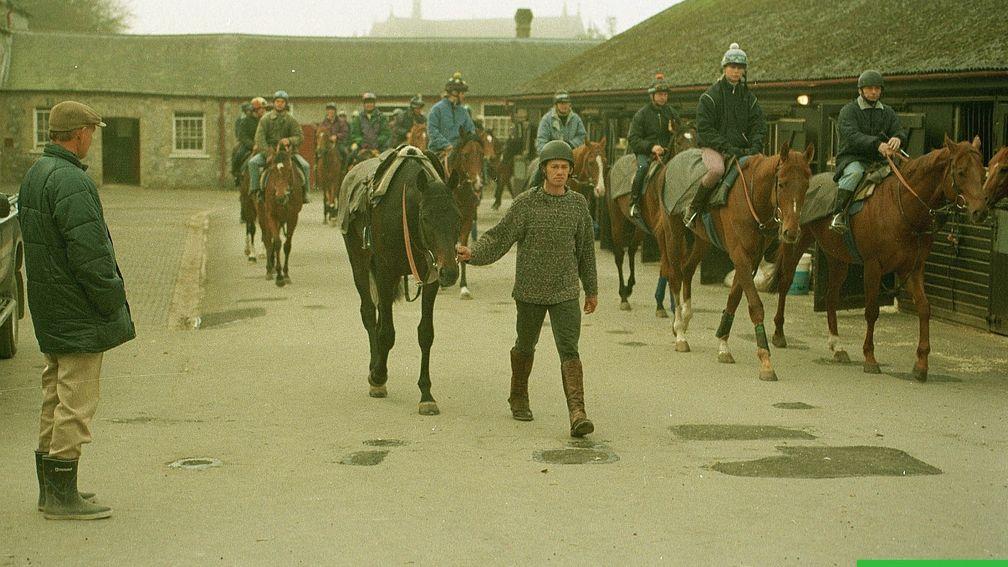
John Dunlop, who has died at the age of 78, was one of the greatest and most respected trainers of his generation with a total of about 3,600 victories.
In a 47-year career at Castle Stables, Arundel, he enjoyed consistent success at the top level, most notably with Derby winners Shirley Heights and Erhaab, champion sprinter Habibti and Irish Derby-winning filly Salsabil.
He also trained Arc runners-up Balmerino and Leggera, champions Awaasif, Shadayid, Elnadim and Mujahid, Derby runner-up Sakhee, and Sheikh Mohammed’s very first winner, Hatta.
The patriarch of a training dynasty, he was a tall, quintessential English gentleman with commanding features and an understated, relaxed, patrician charm. Willie Carson said: “John was from the old school and was always a gentleman to ride for – I don’t remember him ever raising his voice.”
Renowned for his enterprise in targeting big races abroad, he campaigned for the welfare of horses and stable staff and was also active in racing politics, although his career ended under a cloud.
John Leeper Dunlop was born at Tetbury, Gloucestershire on July 10, 1939, the son of a country doctor who was a keen racing fan.
He did his National Service in the Royal Ulster Rifles (his family had come from Ulster) and then worked for two years as general dogsbody for trainer Neville Dent in the New Forest.
In 1963 he persuaded trainer Gordon Smyth to hire him as secretary and assistant even though he had no idea how to carry out his secretarial duties.
Smyth was private trainer to the Duke and Duchess of Norfolk and their friends at their Castle Stables at the foot of Arundel Castle in Sussex.
Dunlop’s life underwent two profound changes in 1965. In June he married Sue Page, who proved an immense support in his career and together they had three sons, Tim, Ed and Harry. And at the end of that season Smyth left to take over the horses trained by the ailing Jack Gosden (John’s father).
As his replacement the Duke and Duchess chose Dunlop, who at the age of 26 therefore took over a successful stable as their salaried trainer.
Dunlop won more races in Britain (66) than any other trainer on the Flat in 1970 and also landed his first Classic, the Irish 1,000 Guineas with Black Satin.
He won the Eclipse with Scottish Rifle in 1973 and the Ascot Gold Cup with Ragstone in 1974. That colt was bred and owned by the Duke, who had been in charge at Ascot for many years, so it was among the most satisfying wins of the trainer’s career.
His two biggest winners in 1977 were both former handicappers – North Stoke, who landed the Joe McGrath Memorial (now Irish Champion) Stakes, and Trusted, who caused a 20-1 upset in the Queen Elizabeth II Stakes.
Former New Zealand champion Balmerino did not join Dunlop until more than halfway through that season, but his magnificent second to Alleged in the Prix de l’Arc de Triomphe made him the best older horse in Europe.
That Arc was one of the last rides in the career of Ron Hutchinson, an Australian who had been Dunlop’s dependable stable jockey from the start. The trainer never had another retained jockey, though Willie Carson became his most regular booking, especially after he was employed by Hamdan Al Maktoum.
The stable’s most significant inmate in 1977 was Hatta, who became Sheikh Mohammed’s very first winner when landing a maiden race at Brighton in June. She then won the Molecomb Stakes.
This was the start of Dunlop’s long and fruitful relationship with the Maktoum family, although it was Sheikh Hamdan who became his main patron as the owner of Salsabil, Shadayid, Marju, Lahib, Erhaab, Bahri, Elnadim, Mujahid, Sakhee and many other stars.
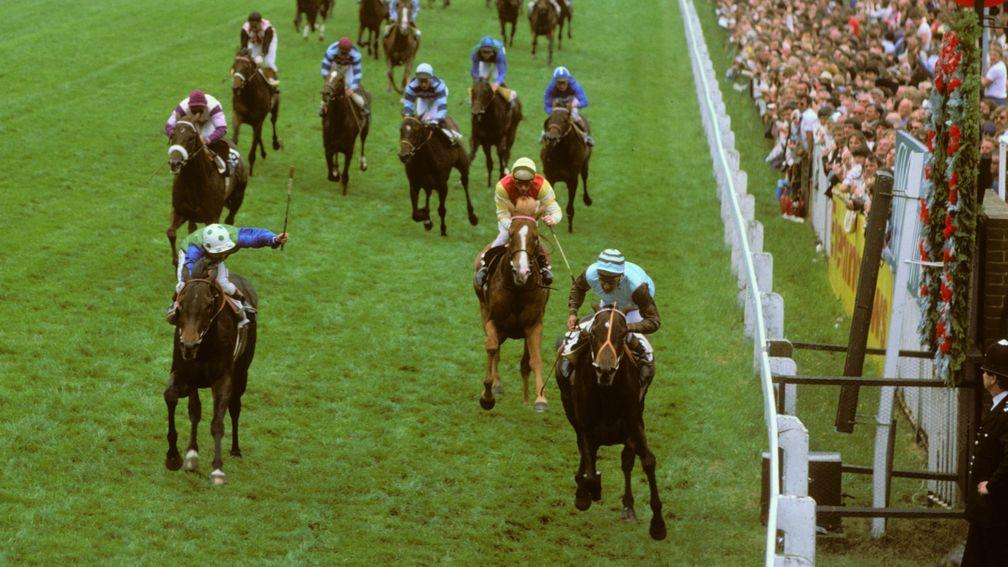
Shirley Heights in 1978 became the most famous horse of the trainer’s career, winning the Derby and Irish Derby. At Epsom he snatched a dramatic last-gasp victory from Hawaiian Sound, and at the Curragh he scored an equally narrow victory with another display of guts and stamina.
The yard’s stars of 1980 were Quick As Lightning, who won the 1,000 Guineas in a blanket finish, former handicapper Sea Chimes, whose Coronation Cup victory was his eighth in a row, and Posse.
In the 2,000 Guineas, Posse was almost brought down when Nureyev barged his way through, and on the latter’s disqualification he was awarded second place behind Known Fact. He then won the St James’s Palace and Sussex Stakes.
Dunlop’s biggest star of 1983 was champion sprinter Habibti, one of the fastest fillies in racing history. Having been tried unsuccessfully at a mile, she scored clearcut victories in the July Cup, Sprint Championship (Nunthorpe Stakes), Haydock Sprint Cup and Prix de l’Abbaye, at Haydock putting up a dazzling display to triumph by seven lengths.
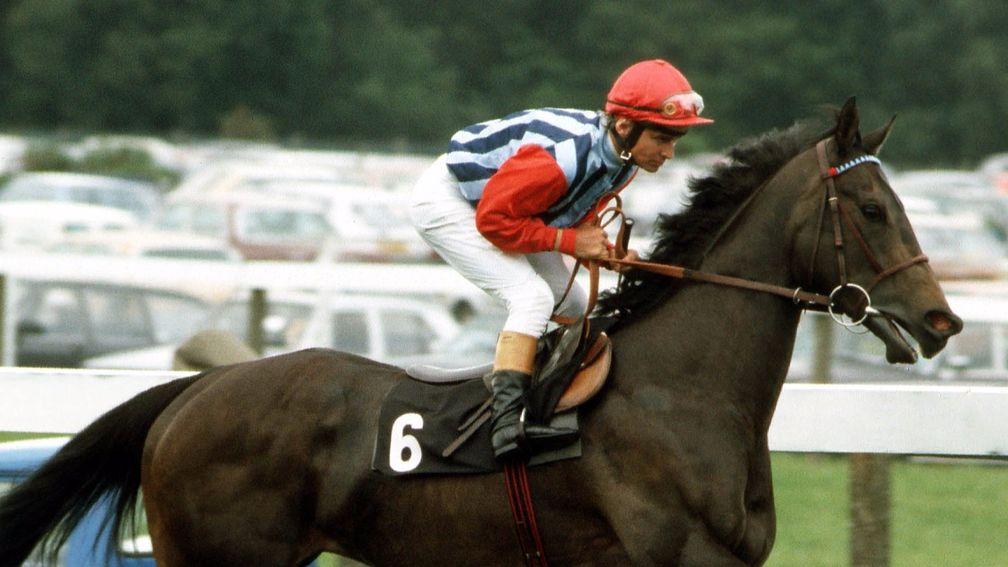
He also had two Classic winners that year – Wassl (Irish 2,000 Guineas) and Mountain Lodge, a four-year-old filly who won the first Irish St Leger open to older horses.
He trained Circus Plume, who in the 1984 Oaks gave Lester Piggott his record-equalling 27th British Classic victory, and followed up in the Yorkshire Oaks, and the next year he became the first British trainer to have 200 horses in his charge.
His victory with Moon Madness in the 1986 St Leger was particularly gratifying as the colt, who was out of a half-sister to Ragstone, was bred and owned by the Duchess of Norfolk, the person most responsible for giving him his job.
Moon Madness won the Grand Prix de Saint-Cloud in 1987 but all the stable’s winners that year were overshadowed by personal tragedy for John and Sue Dunlop. Their eldest son, Tim, was being groomed eventually to take over from his father and had just become a pupil assistant at Chantilly when he was killed in a car crash in France in May. His father was out with the horses on the gallops the next morning but felt unable to go racing for several weeks.
The stable had an exceptional year in 1990 with champion fillies Salsabil and Shadayid.
Salsabil was the highest-profile filly of his career by virtue of three Classic victories. She followed up her 1,000 Guineas and Oaks triumphs by defeating colts in the Irish Derby, and then landed the Prix Vermeille.
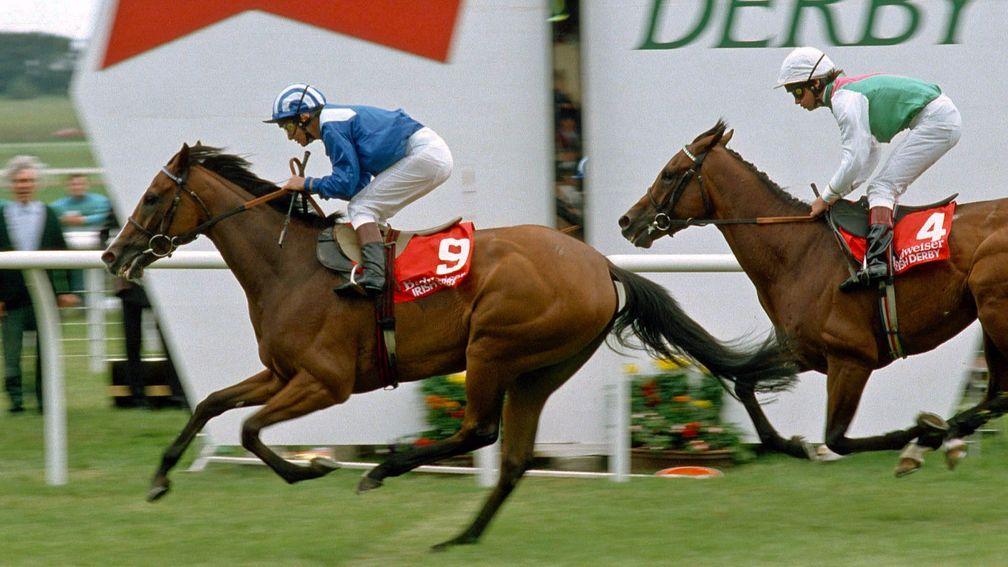
Shadayid proved herself the champion two-year-old filly with victory in the Prix Marcel Boussac, and justified odds-on favouritism in the 1,000 Guineas in 1991.
Dunlop scored his second victory in the Derby in 1994 with Erhaab, who lost most of his races but won the Dante and produced a spectacular finishing burst from an apparently hopeless position at Epsom.
His trainer finally climbed to the top of the greasy pole by becoming champion trainer in 1995, thanks largely to Bahri.

Bahri was third in the 2,000 Guineas and Irish 2,000, won the St James’s Palace Stakes, and returned to Ascot for the Queen Elizabeth II Stakes, when an inspired Willie Carson took him over to race on faster ground on the far rails in the back straight and prevailed by six lengths.
Dunlop had long been an active fundraiser for charities, especially those connected with stable lads’ welfare, and in 1996 that work was recognised by his appointment as an OBE.
He was a trustee of Racing Welfare, the Moorcroft Centre and the British Racing School, and his stable’s open days raised about £250,000 for local charities over the years.
In 1997 he just missed out on a third Derby victory when Silver Patriarch was beaten on the nod by Benny The Dip, but the grey went one better in the St Leger, giving Pat Eddery his 4,000th win in Britain. He also landed the Coronation Cup in 1998.
The best horse Dunlop ever housed at Castle Stables was Sakhee, who won the Dante Stakes and came second in the Derby in 2000 before being transferred to Godolphin for his glorious four-year-old campaign.
Dunlop scored his last Classic victory when Millenary triumphed in the 2000 edition of the St Leger. The following year the trainer was close to death after suffering a ruptured aorta, but he soon recovered.
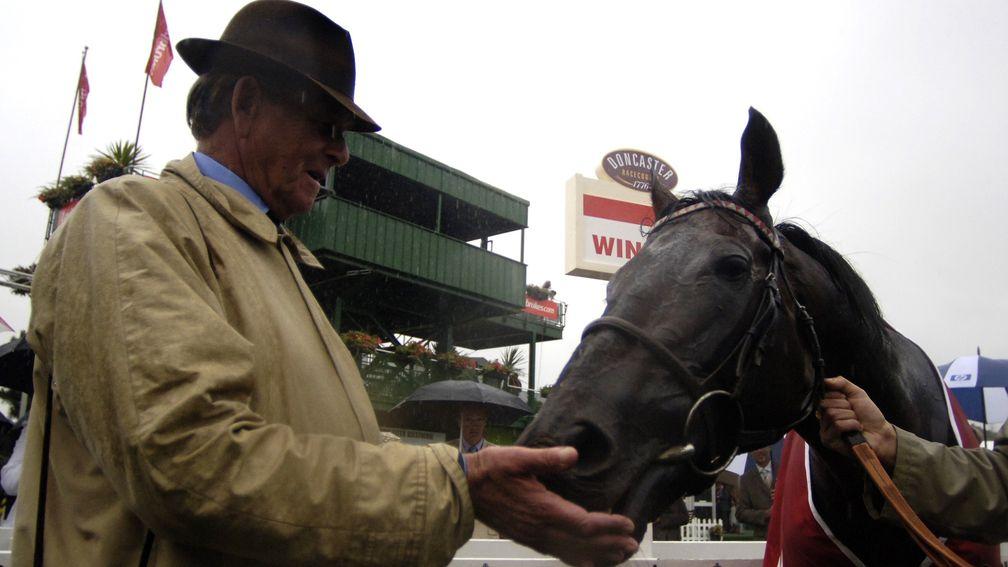
In the last ten years of his career Dunlop had no Group 1 winners at all. He announced in September 2012 that he would retire at the end of the season, and the reason soon became public – his business had gone bust.
He had long since ceased to be a salaried employee of the Duke of Norfolk’s Arundel estate and had become a public trainer, but he was still no more than a tenant at his yard, which he ran in the name of Castle Stables Ltd.
That company went into voluntary liquidation with debts of £1.36 million, even though Dunlop himself, in an attempt to keep it afloat, had loaned it £530,000, which he therefore lost.
Unsecured creditors, including vets and feed merchants, also lost their money, and his staff, some of whom had worked there for many years, were left unemployed and in financial difficulty. It was an ignominious end to a career of the utmost distinction.
He leaves his wife, Sue, and his two youngest sons, Ed and Harry, who have been training since 1994 and 2006 respectively.
Published on 7 July 2018inObituaries
Last updated 14:25, 7 July 2018
- Mark Bradstock: the small-scale trainer who defied the odds to win jump racing's ultimate prize
- Grace, charm, style and knowledge - vibrant Maureen Mullins provided the DNA for Irish racing
- An irrepressible character with a ready wit: Alan Sweetman reflects on the life of Tommy Kinane
- Edward Hide: a supreme tactical judge with an unblemished record of integrity and honesty
- Lady O'Reilly: gracious and cosmopolitan host whose love for horses was genuine and rooted in a lifelong passion
- Mark Bradstock: the small-scale trainer who defied the odds to win jump racing's ultimate prize
- Grace, charm, style and knowledge - vibrant Maureen Mullins provided the DNA for Irish racing
- An irrepressible character with a ready wit: Alan Sweetman reflects on the life of Tommy Kinane
- Edward Hide: a supreme tactical judge with an unblemished record of integrity and honesty
- Lady O'Reilly: gracious and cosmopolitan host whose love for horses was genuine and rooted in a lifelong passion